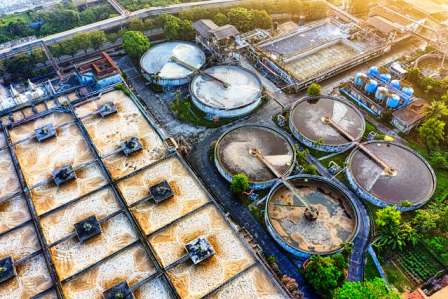Introduction
Produced water, the largest byproduct of oil and gas production, requires effective treatment and disposal to meet environmental and operational standards. This article outlines the minimum mandatory requirements for the process design of grassroots produced water treatment and disposal units at Gas Oil Separation Plants (GOSPs) and the debottlenecking of existing units, referencing international standards where applicable.
Scope
The requirements apply to:
- Grassroots Units: Minimum standards for designing new produced water treatment and disposal units at GOSPs.
- Debottlenecking: Standards for enhancing the process design of existing units to address capacity or performance limitations.
- Exclusions: These requirements do not cover wastewater from activities governed by other wastewater management standards.
Key Design Requirements for Grassroots Units
1. Overall Process Design
The design of produced water treatment and disposal units must follow a structured project development process, progressing through:
- Conceptual Study
- Design Basis Development
- Project Proposal
- Detailed Design and Construction
Key Data Requirements:
- Crude, gas, and water production forecasts
- Geo-chemical analysis of formation and desalter wash water
- Disposal destination (e.g., injection or marine discharge)
- Injection wellhead pressure and water quality requirements
- Injection well locations and flow rates
Simulations and Deliverables:
- Steady-state process simulations must be developed during the design basis phase, updated in the project proposal, and finalized in detailed design, using industry-standard simulation software.
- Simulations cover summer and winter conditions at initial, intermediate (optional), and design water cuts.
- Process Flow Diagrams (PFDs) and Piping and Instrumentation Diagrams (P&IDs) must include heat and material balances, instrument data, and level alarm settings per international standards (e.g., API standards).
- Units must be designed for wet sour service unless reservoir data confirms otherwise.
Safety Instruction Sheets for Static Equipment
2. Water Treatment Unit
Produced water treatment units can be primary or secondary, based on influent water quality and target effluent standards.
Influent Water Design Data:
- Oil and Grease: Normal 1,000 ppm, Maximum 2,500 ppm
- Total Suspended Solids (TSS): Normal 1,000 ppm, Maximum 2,500 ppm
- Variations require approval from the process engineering authority.
Effluent Quality:
- For reservoir injection/disposal: ≤100 mg/L oil and grease (unless specified by reservoir management).
- For marine disposal: Must meet international environmental standards (e.g., API PUBL 421 for oily water separators).
- For desalter reuse: Per material selection requirements.
Treatment Technologies:
- Primary Treatment: Water Oil Separator (WOSEP) or Corrugated Plate Interceptor (CPI) separators.
- WOSEP: Designed for 150-micron oil droplets, 10-minute water retention time, and laminar flow (velocity ≤3 ft/min), per API PUBL 421.
- CPI: Preferred for tighter emulsions or effluent <50 ppm oil in water (OIW), removes 60-micron droplets.
- Secondary Treatment: Used when primary treatment is insufficient (e.g., for <20 ppm OIW). Options include:
- Liquid-Liquid Hydrocyclones: For median particle sizes >30 microns and feed pressure >100 psig.
- Induced Gas Flotation (IGF)/Dissolved Gas Flotation (DGF): Removes 25-micron particles using gas bubbles.
- Media Filtration: Uses nutshell or granular media for 5-micron particle removal.
- Technology Selection: Follows a decision process considering influent quality, flow variability, and oil droplet size.
Monitoring and Safety:
- Sampling points at inlet, intermediate, and outlet stages for oil content and chemical residuals.
- High-efficiency mixing for chemical injection, with emergency eyewash/showers per international safety standards.
- State-of-the-art online oil-in-water analyzers for trending.
3. Disposal Water Pumps
- Designed to handle treated water for disposal/injection wells per international centrifugal pump standards.
- High-pressure pumps (booster or multi-stage) to overcome wellhead pressure.
- Staged pump additions for increasing water volumes, with one spare pump (n+1 sparing).
- Separate pumps for produced water and aquifer water injection systems.
4. Material Selection and Corrosion Control
- Materials selected per international standards for pipelines and process equipment (e.g., NACE MR0175/ISO15156 for H2S-containing environments).
- Corrosion inhibitors, biocides, and oxygen scavengers evaluated during design phases.
- Online corrosion monitoring systems and cathodic protection finalized with corrosion engineering expertise.
- Coatings per international standards for industrial plants and pipelines.
5. Groundwater Conservation
- Maximize conservation per international environmental policies.
- Minimize groundwater use for desalter wash water and injection by using alternatives like produced water, seawater, or desalter effluent.
- Technologies evaluated for 70% minimum wash water replacement, maintaining quality (TDS, pH, bacterial count).
6. New Technology Applications
- Evaluate emerging technologies (e.g., ceramic membranes, activated carbon, reverse osmosis) before deployment.
- Field testing required for new technologies; proven technologies may be waived with original equipment manufacturer (OEM) performance guarantees.
Debottlenecking Existing Units
Debottlenecking addresses capacity or performance issues in existing GOSPs, particularly when:
- Crude production increases
- New wells are opened
- Water cut rises sharply
- Chemical injection increases significantly
Key Requirements:
- Conduct capacity tests when triggered by the above conditions.
- Apply design guidelines from this standard for debottlenecking.
- Many GOSPs rely on primary treatment (WOSEP/CPI), with some using IGF or Compact Flotation Units (CFUs). Hydraulic limitations or low flow rates may render secondary units non-operational, requiring upgrades.
- Ensure primary treatment achieves <1,000 ppm OIW before secondary treatment, per the technology selection decision process.
- Evaluate retrofitting with advanced technologies (e.g., hydrocyclones, media filtration) to meet stricter effluent standards (<20 ppm OIW).
Conclusion
These requirements provide a comprehensive framework for designing and debottlenecking produced water treatment and disposal units at GOSPs. By adhering to international standards such as API PUBL 421 and NACE MR0175/ISO15156, operators can ensure environmentally compliant, cost-effective, and reliable management of produced water, supporting sustainable oil and gas operations.

